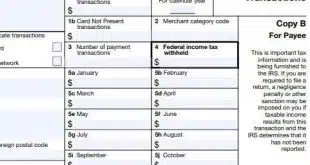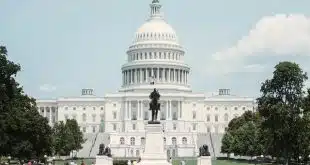On April 15, Visa Inc. lowered the amount a merchant can surcharge for transactions on its credit cards from a maximum of 4% to 3%, a move it had announced early this year.
Merchants that want to surcharge will have no option but to comply with the 3% cap, says Jeff Fortney, senior associate at TSG, an Omaha, Neb.-based payments-advisory firm. In Canada, the cap will be set at 2.4%, Fortney wrote in a March TSG blog post. Visa issued a bulletin in January about the reduction.
Surcharging on debit cards, even if processed as signature debit, is not permitted. Doing so is a violation of the Durbin Amendment to the Dodd-Frank Act, which caps debit card costs, Fortney says.
The 3% cap may not cover a merchant’s total cost of credit card acceptance, but it may get the merchant to pay more attention to transactions it does surcharge.
Some merchants, whether knowingly or not, assess a surcharge on all cards, even though a consumer may use a debit card. That will result in fines, which usually are passed down from the issuer to the acquirer to the independent sales organization to the merchant, Fortney says. Fines for violating the regulation are based on each incident. Fines have been issued starting at $30,000 per incident. Fines will also be assessed for surcharging more than 3%, he says.
A recent TSG survey of 530 small businesses found that 58% said they have a clear understanding of surcharging, while 30% said they had heard of it, but lacked a full understanding of the practice, and 12% did not know what it was.
The impact on merchants will depend on automatic updates from their provider, says Jonathan Razi, chief product officer at Stax, an Orlando, Fla.-based payments provider. Razi had been chief executive of CardX, a Chicago-based surcharging platform that Stax acquired in 2021. Merchants can surcharge on point-of-sale and e-commerce transactions.
Merchants using a “do-it-yourself,” a cash discount, or non-cash adjustment, also must comply, Razi says, because they add a fee at the point of sale above the list price.
“I have personally seen a significant increase in enforcement actions against products like these, with fines, starting at $5,000, and expect many of these merchants will be caught offside—and urgently need to get compliant—once the new Visa rule goes into effect,” Razi says by email to Digital Transactions. All states but Massachusetts and Connecticut allow surcharging.
“Visa’s move from 4% to a 3% surcharge limit will encourage more merchants to move to a true cash discount or other programs [from] surcharge offerings on purchases. Outside of that, it shouldn’t have too big of an impact on the economy at large,” says Ben Ross, chief operating officer of Green Payments, a Long Branch, N.J.-based payments provider.
The cap reduction could make some merchants reconsider their surcharging plans, he says. “This is going to be a definite shift for companies that rely on this method. Businesses will most likely look into creative services like cash discounts or dual pricing offerings over a typical surcharge model,” Ross says by email.
Some acquirers are challenged by the rate reduction, Razi says. “I observed a large acquirer officially communicate that this change applied to ‘[n]ew merchants only,’ and that ‘[c]urrent merchants will still be able to charge 4%’—which is totally erroneous, as this rule applies to all merchants,” Razi says.
“There is a lot of industry confusion, which is understandable in a space where regulation changes frequently,” he adds. “However, it drives home the importance of making sure you are selecting a partner that has real expertise.”
Along with technical changes to point-of-sale software, merchants also will need to update signage that discloses the surcharging policy.
“This would include replacing print signage in their store locations, updating the invoices they send to customers, and revising webpages that reference the surcharge rate (as just a few examples),” Razi says. “When it comes to online checkout, many merchants use a payment page that is hosted by their technology partner—in which case the technology partner will update the disclosure on that page.”
He also suggests that the surcharge amount be transmitted in the authorization and clearing message when the transaction is processed, a move that helps the card brands review surcharge amounts for
each transaction.
Having fought for a decade for clearance to surcharge credit card transactions, merchants aren’t likely to step away from the practice, even though the cap will be lower.
Credit card surcharging’s origins lie in litigation merchants brought against the major card brands over their interchange rates. Surcharging was first allowed in 2013 following a 2012 settlement on credit card interchange. At that time, a plaintiff in the litigation, along with the National Retail Federation, suggested no merchants intended to add surcharges to their credit
card transactions.
That’s not the case today. “We have seen surcharging demand accelerate not only every quarter, but literally every week, with no signs of slowing,” Razi says.
“I believe there are three main reasons this trend is going strong,” he adds. “First, merchant-processing fees continue to rise, so the pain is increasing. Second, traditional merchant services have been commoditized through price competition, meaning acquirers want to sell differentiated technology solutions. And, third, the market opportunity for surcharging is growing, thanks to a larger number of states that permit surcharging.”




